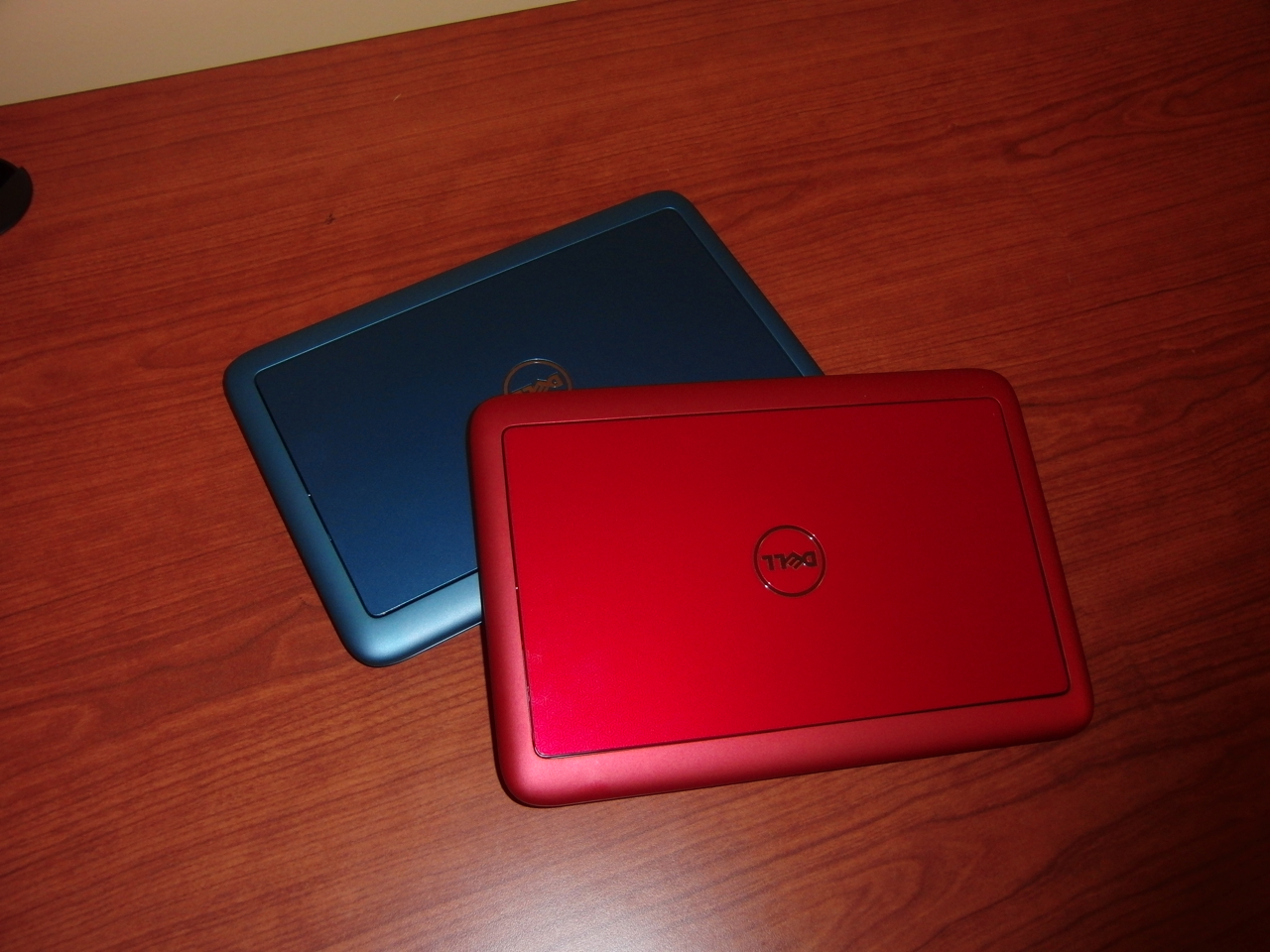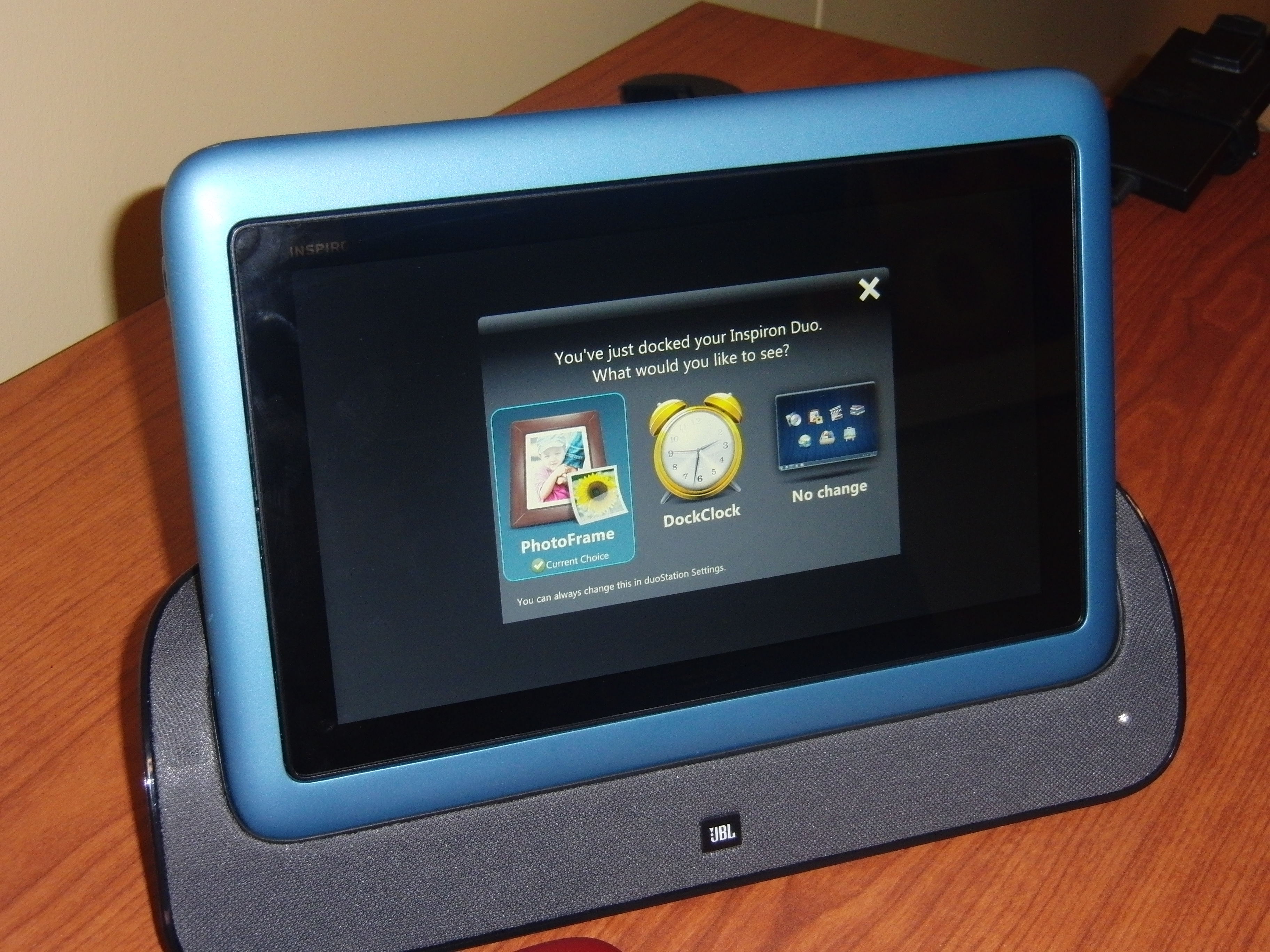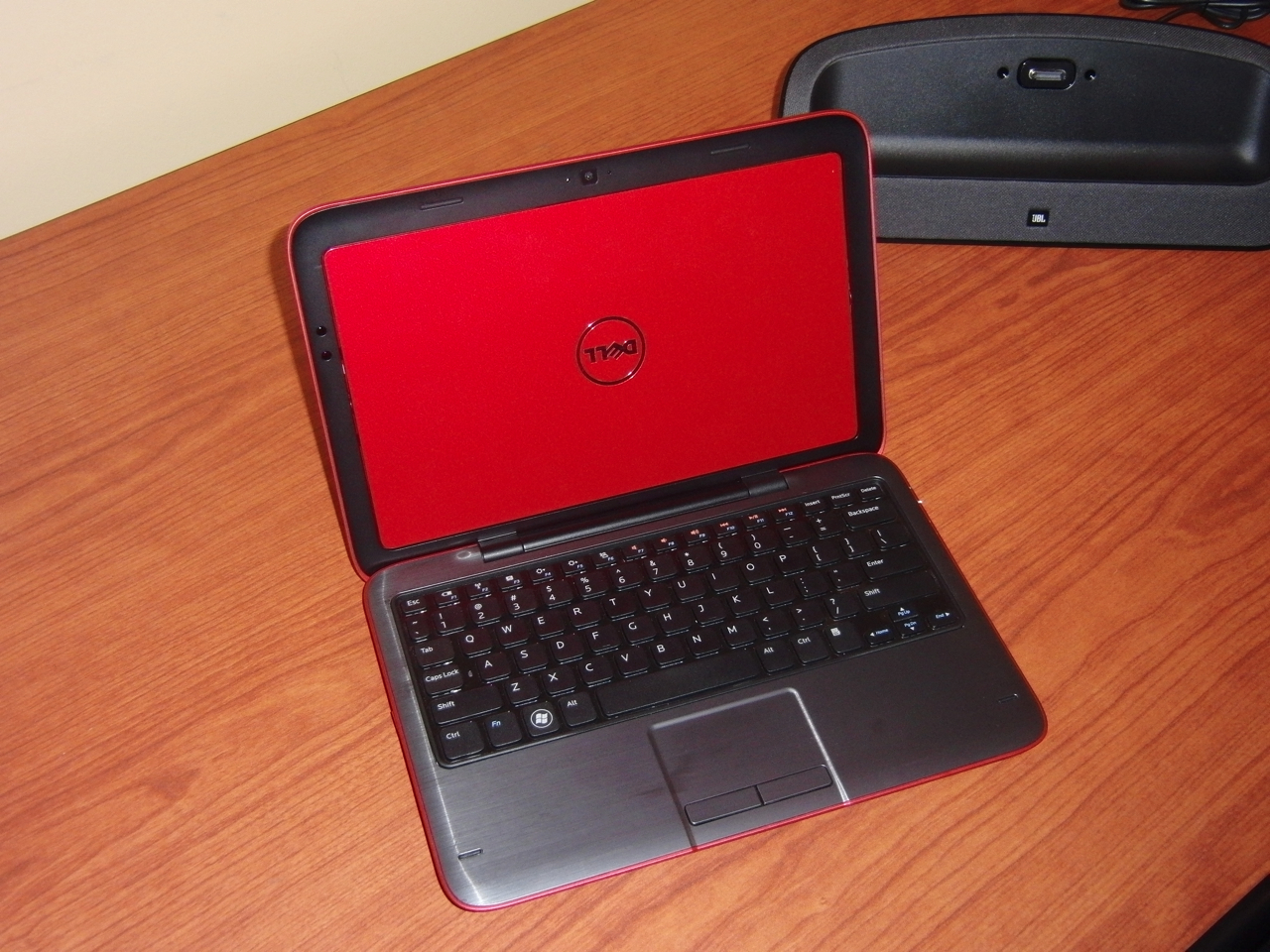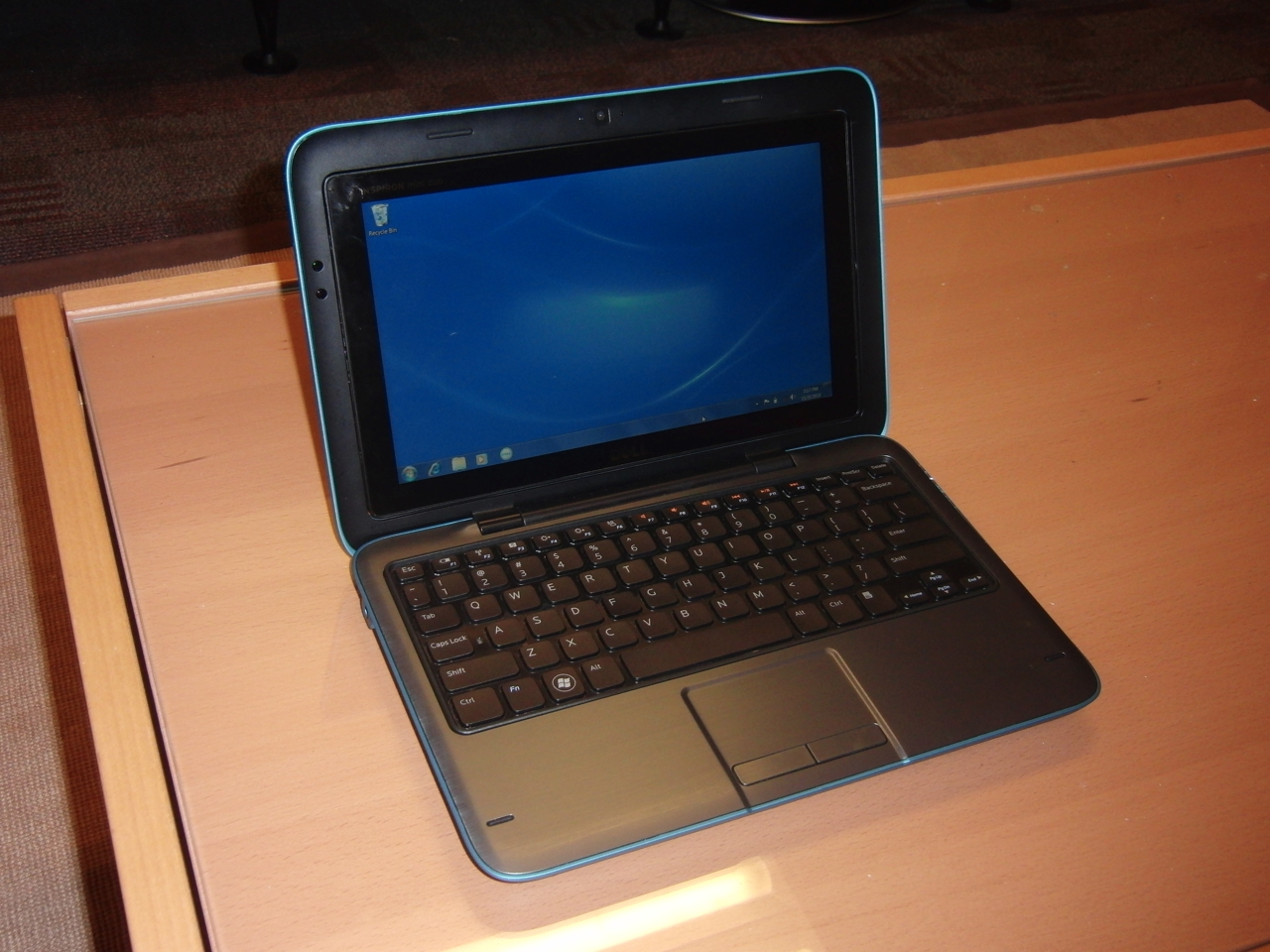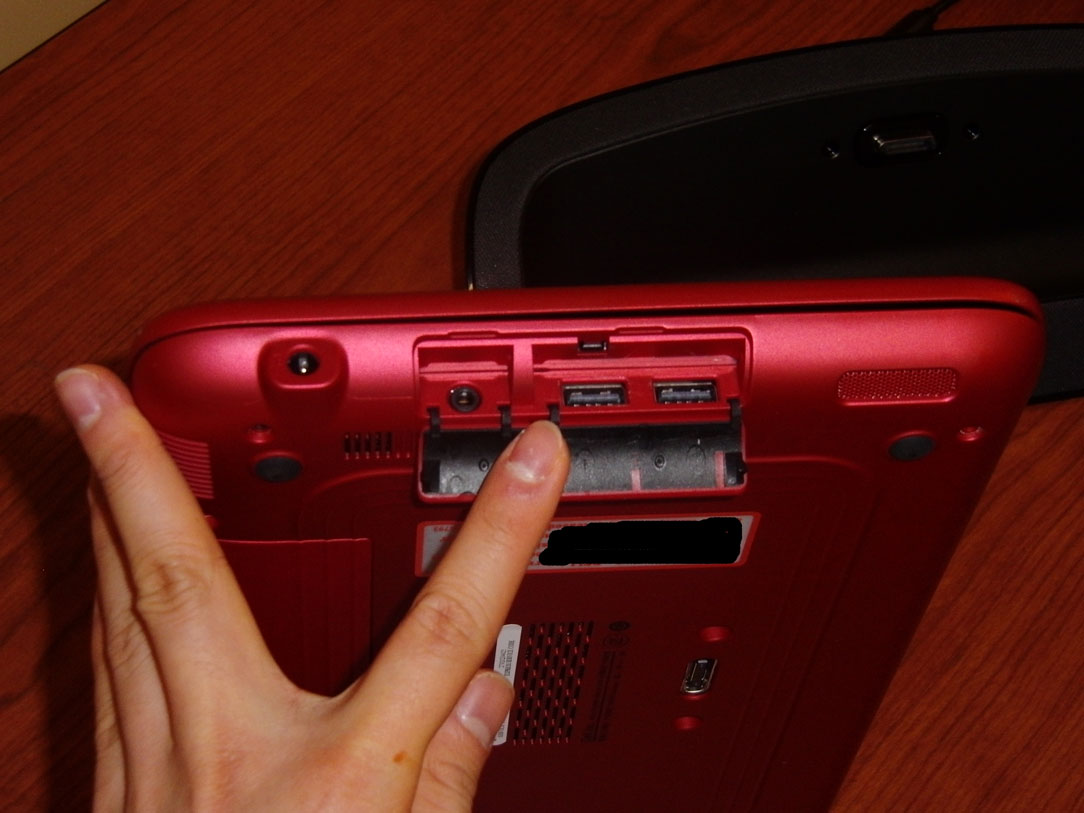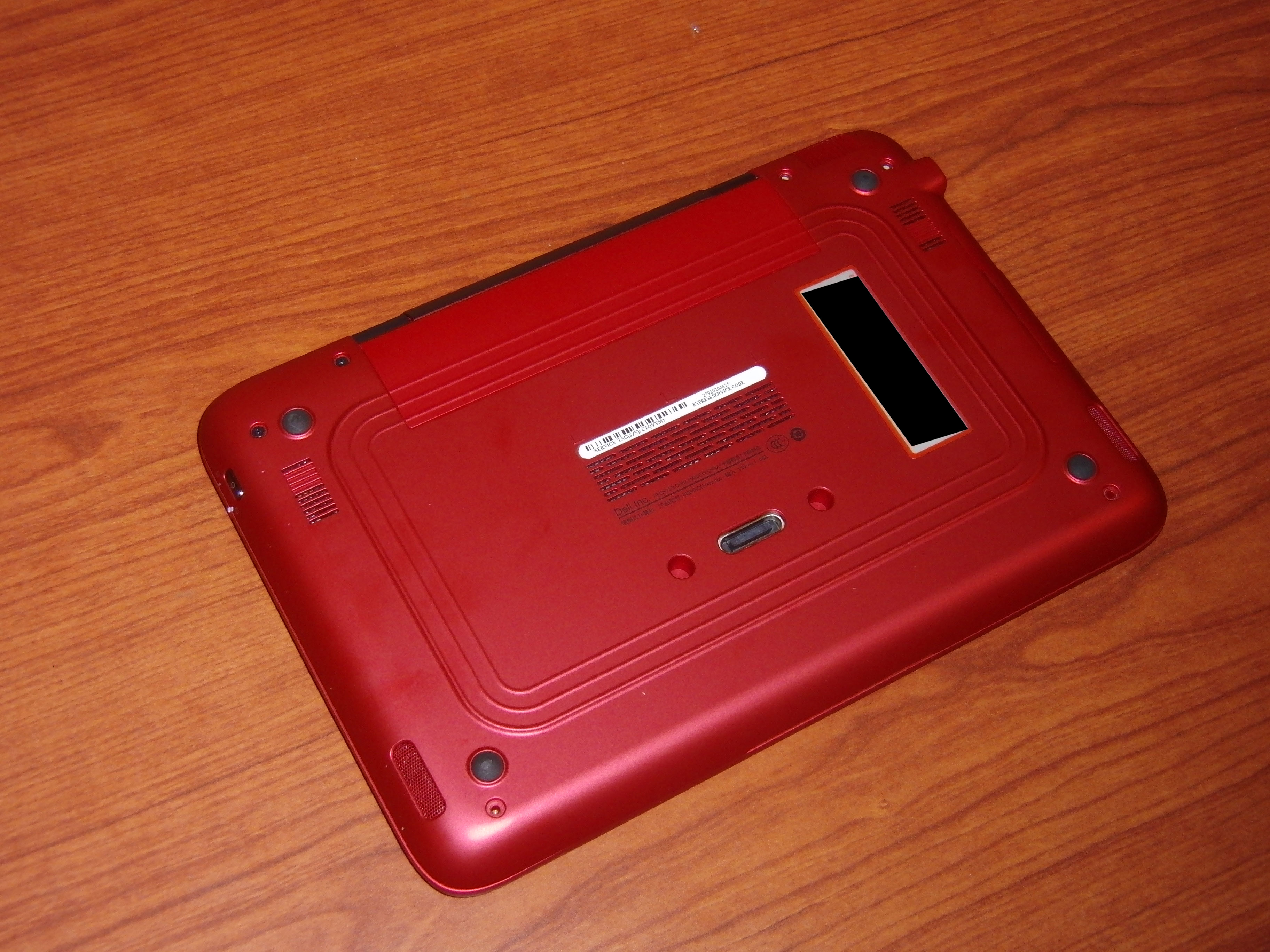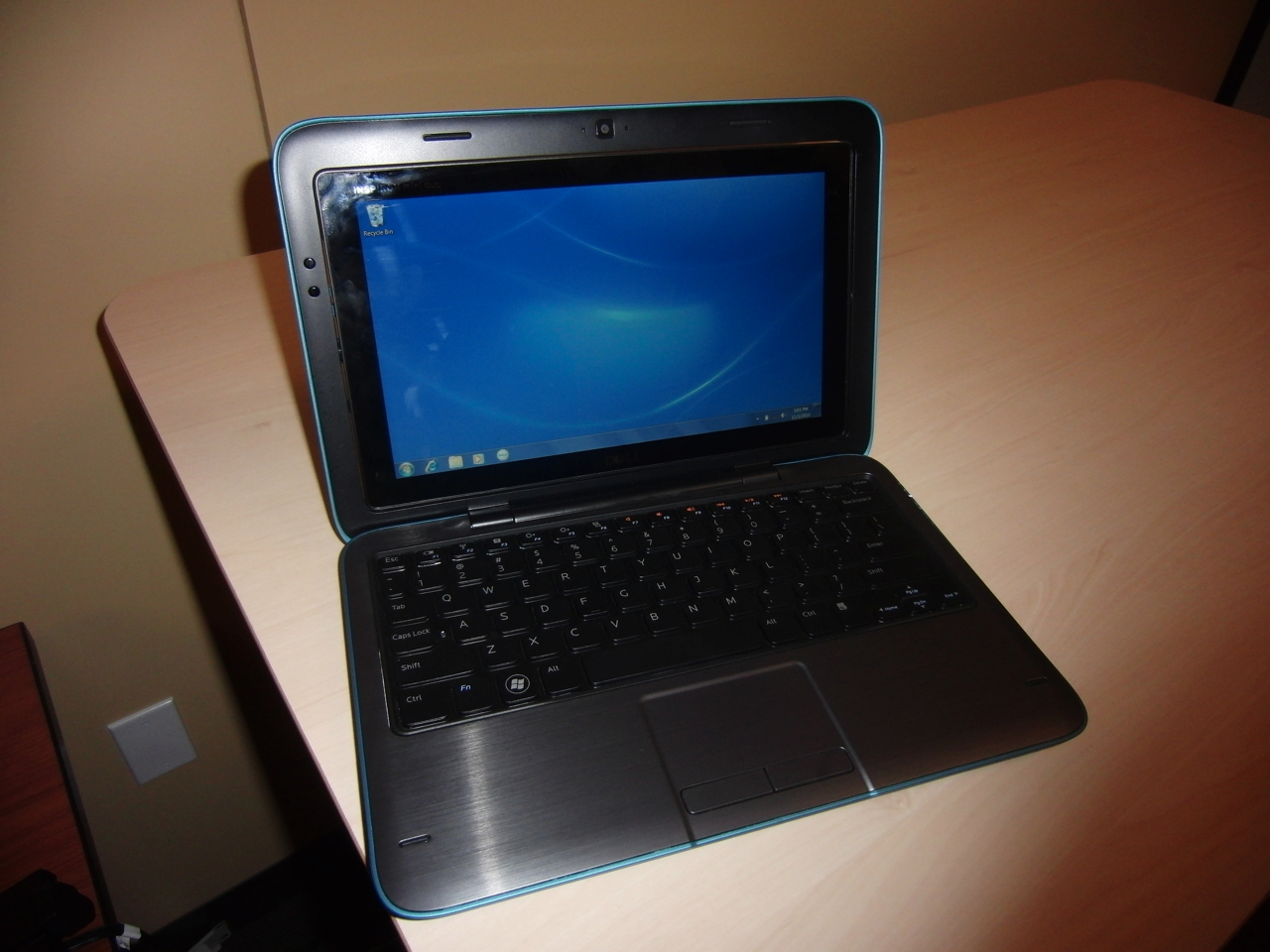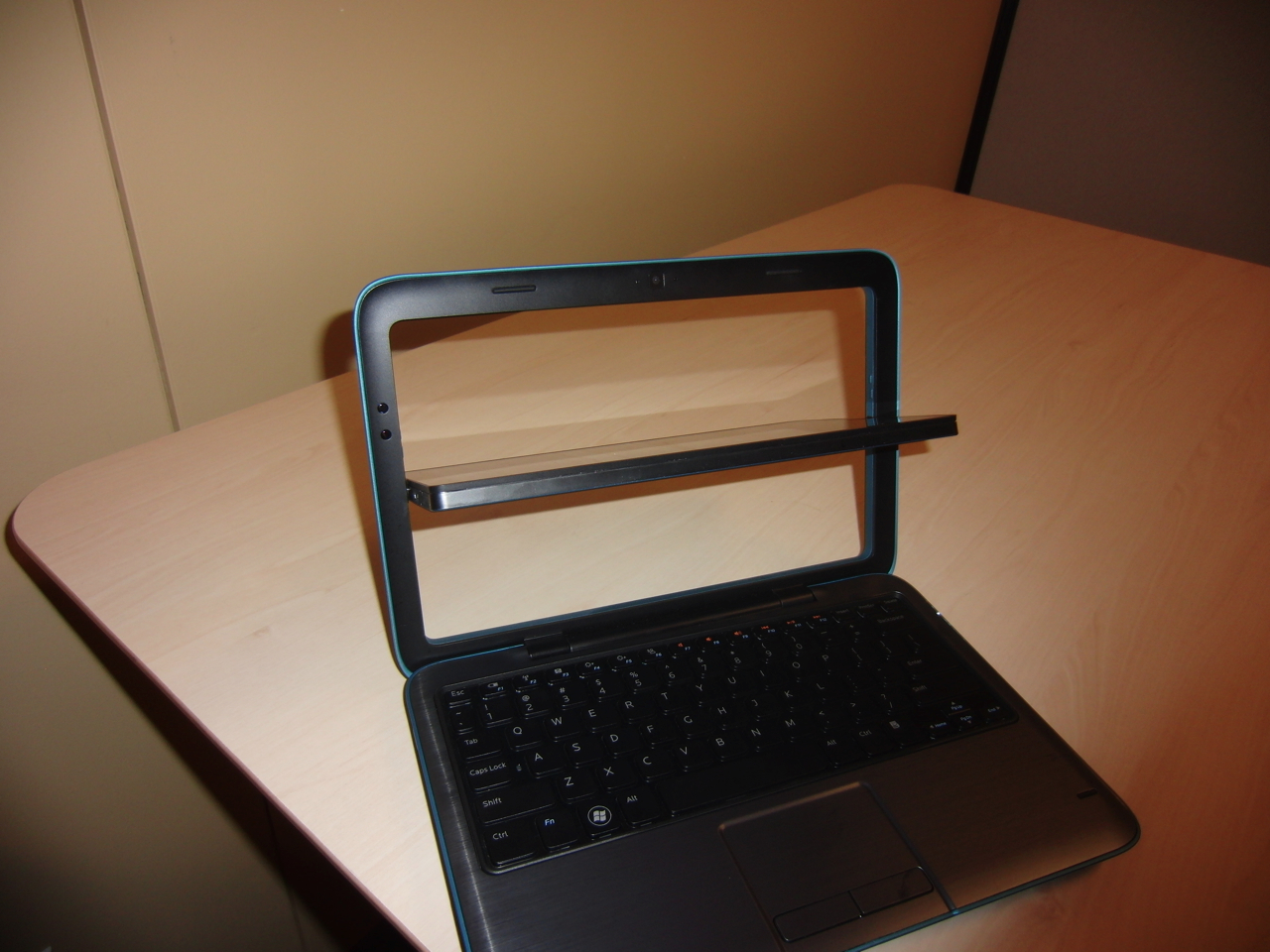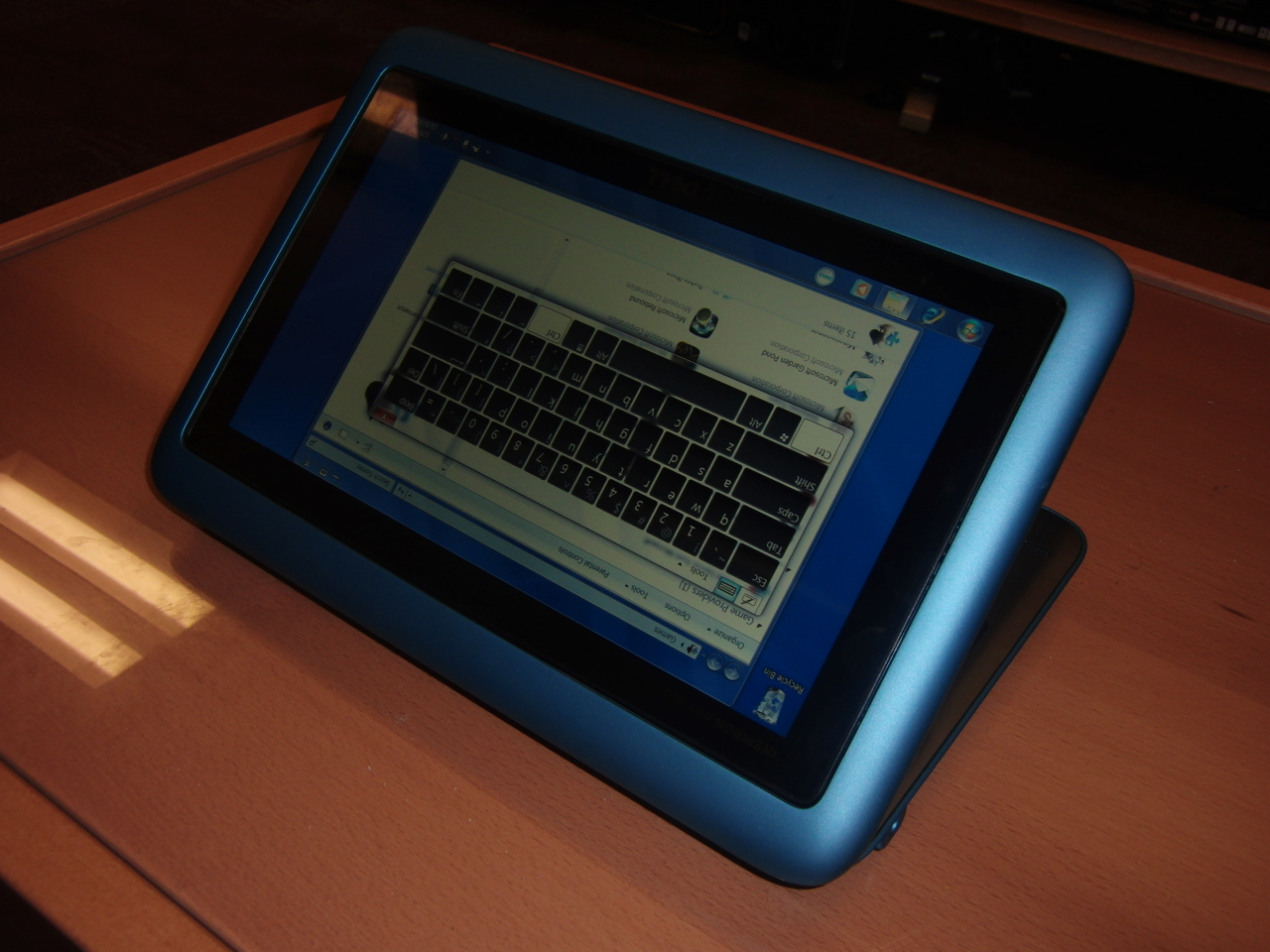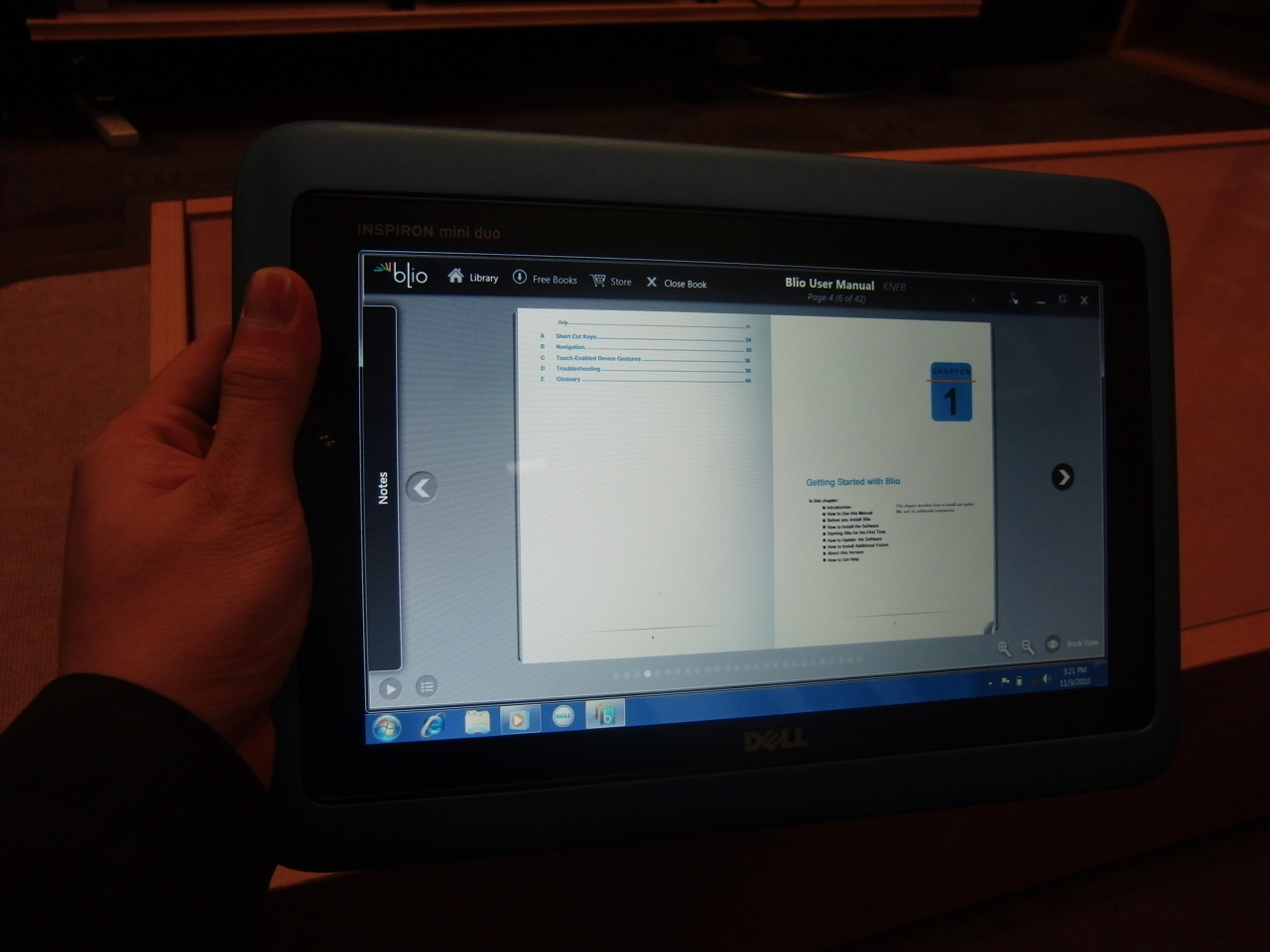Hands-on with Dell Convertible Duo Tablet Laptop
Well, look what we have here! Meet Dell's new baby, the Inspiron duo.
The other day, Andrew spend a couple hours will Dell, chatting about the company's new Inspiron duo (it is supposed to be lowercase, we checked) tablet-cum-netbook. It would have been nice to take you all along with us, but we weren't really sure that would go down so well, so instead, you'll have to make do with these pictures and some as-yet unreleased information on battery life and the like.
Unveiled at IDF back in September, the duo made a pretty big splash for a couple of reasons. It was the first new convertible tablet PC that we'd seen for some time. The most recent one is the HP TouchSmart tm2t, which only saw an update to UM Arrandale processors in the past couple of months. The second reason is that the duo is a Tablet PC, and Andrew is particularly adamant that we not compare this to the iPad, which is not a tablet PC.
"The iPad is a great device, but remember that an iPad is tablet not a tablet PC. The ModBook is the only Tablet PC that is allowed to run the MacOS. It's expensive but it's one truly one of a kind. Tablets restrict OS functions. Tablet PCs run the same OS as their PC brethren."
So we know it's not a tablet, but a tablet PC, so what exactly is it? What's inside this nifty little netvertible?
Those are the specs, but we know that brains aren't everything and you can't buy a PC you're not physically attracted to, so here are some pictures of both the blue and red versions and the docking station Dell will be selling along side them:
So, what else did we manage to wangle out of Dell? Well, we know the duo starts at $549, is available for preorders at the Microsoft Store today (starting 10 a.m. CST) and comes in three colors: black, blue and red. You should see it on Dell.com in about a week. As you can see in some of our pictures, there is an docking station available -- if you're the docking station type, this is going to tack another $75 onto that price. Though this definitely pushes the price into budget laptop territory, it gives you the benefit of a ~20W JBL speaker system, 2 x USB 2.0 ports, 3.5mm audio output, multi-smart card reader, as well as an Ethernet connection. It also doubles as a charging station for the machine itself.
Units will start shipping sometime in the first half of December, so there is plenty of time until these things are actually on shelves. However, in an effort to drum up preorders, Dell and Microsoft are running a special on the duo and the docking station. You can buy both for $599 if you order between now and December 2.
Get Tom's Hardware's best news and in-depth reviews, straight to your inbox.
Construction
The unit itself has just 2 x USB 2.0 ports, 3.5mm audio output, and a power connector. There is no VGA output directly from the duo, which isn't really surprising, considering this is not a business device but a tablet aimed at more casual users who spend their time watching videos and surfing the web.
"The whole feel can be best described as a rubberized coating on an aluminum shell," Andrew says. "The keyboard is surrounded by what feels like a carbon fiber composite that gives the look but not the feel of the brushed aluminum. The touchpad is integrated, but honestly, we didn't spend enough time playing with it in PC mode to give a thumbs up or no."
As you can see from some of the pictures, there are plenty of finger smudges, but the rubber coating on the shell and the low polish on the upper casing means oil build-up is present but much less noticeable. The buttons are also segregated from the touchpad. Previous netbooks from Dell (such as the Mini 1012) have had the touchpad and its buttons were integrated to save space, but it was something we found difficult to work with.
Battery Life
What about battery life? As with all laptops, this is something everyone has been curious about. We used it for close to an hour, and can tell you that it runs for about 2:30 to 3:15. (Note: This is with wireless always on.) Why is the battery life lower than other similar netbooks? Well, for one Dell is using the N550 processor which has a 8.5W TDP (compare this to the N450 at 5.5W). Second, it only sports at 4-cell battery. Third, Dell upgraded Starter to Premium to get Aero Glass.
Now we know people are going to bemoan the fact it uses a built in battery, but it is probably for the best. If Dell had modularized the design, we would be looking at 3-cell because the interface connection takes up more real estate. As for the 45 minute range in estimated battery life, the duo has an ambient light sensor so the display brightness is automatically adjusted. Also, as we all know, battery life is going to vary based on what you are doing. Watching videos consumes more power than checking email and browsing the web.
The Display
For us, the display (10.1" WXGA - 1366x768) is the most interesting part of this tablet PC. The duo gets into slate mode by flipping the LCD within the bezel upside down (watch the video below if you haven't already seen the multitude of demos of this mechanism). As soon as you close the display lid, slate mode kicks and the duo throws up a different splash screen. The normal Windows 7 Tablet input panel is toggled by moving your finger/cursor over the edge of the screen. We are told that unlike other tablet PCs, the input panel will automatically be resized to a larger portion of the screen than you typically see in default settings on other systems. You also don't have to use the splash screen, but it is the default setting for slate mode. You can still close out of it. Also worth noting is that the splash screen is not supposed to have the Windows task bar visible; that was a glitch in the prototype unit which we'd say was due to an older driver set.
We found the finger-writing input to be fairly easy because Windows 7 has a better learning algorithm than XP or Vista Tablet Edition. It isn't as natural as writing per se, but typing and writing on a tablet/tablet PC regardless of digitizer technology is always a different experience than writing on paper. You'd be silly to expect otherwise.
To put the unit back into notebook mode, you just open up the unit. This closes the splash screen interface you are in, and it reverts back to the normal Windows desktop display. You then just flip the unit in the reverse direction and you are good to go. Again, also worth noting is that fact that the display doesn't rotate 360 degrees. This is something we've known since IDF, but it's still a little disappointing.
Perhaps our favorite thing about this Tablet PC is something one of the Dell engineers pointed out during our demo. We're not sure if this was part of the original design, but we don't believe the accelerometer is in the display. When you flip the lid into slate mode, the security hooks that lock into place seems to be system-recognized. The unit we used wasn't updated with new drivers, but we are told you can use this in a similar way as any slate on a stand. When you flip the screen, the Windows desktop should invert. This means if you turn the unit around you can use it kind of like a kiosk in the same way many people hook up their iPad to an additional stand that rests in their lap.
We will have an in depth review of the Dell Inspiron duo once we get a production unit from Dell. Until then, feel free to ask questions!
Field reporting, hands-on experience and photos by Andrew Ku; editing and additional reporting by Jane McEntegart

Jane McEntegart is a writer, editor, and marketing communications professional with 17 years of experience in the technology industry. She has written about a wide range of technology topics, including smartphones, tablets, and game consoles. Her articles have been published in Tom's Guide, Tom's Hardware, MobileSyrup, and Edge Up.
-
house70 I hope the units will be upgradeable in terms of SSD , cause that would add a good battery time.Reply -
andrewcutter add an ethernet port to this, a dvd or blue ray drive, a SB i3 when released and a dicrete ati or nvidia and im sold......Reply
a person can dream cant he :)
jokes aside this is more interesting than tablets :) -
pale paladin This thing seems to be a more competent appliance then any other tablet I've seen. I hope dell gets it right so I can show IPAD users how crappy that thing is. I know the fanboys will say that it's late to the market but I'd rather have something that is more then an HUGE IPOD a year later. Yes I have an IPAD for DEV reasons and I hate it.Reply
-
Pawessum16 3 hours equals epic fail for me...and I will bemoan the built in battery. My fully powered laptop with a discrete graphics card can get that kind of battery life (albeit in power saving mode), and I can switch out the battery for a fresh one. Sure it's a touch screen, but for something so underpowered, I'd like to know I'm getting at least 6+ hours (8 or 10 would be delectable). I'd like to see ultramobility and that's not what I'm seeing.Reply
Pass!!
I've been much more interested in HP's option for a tablet PC.

